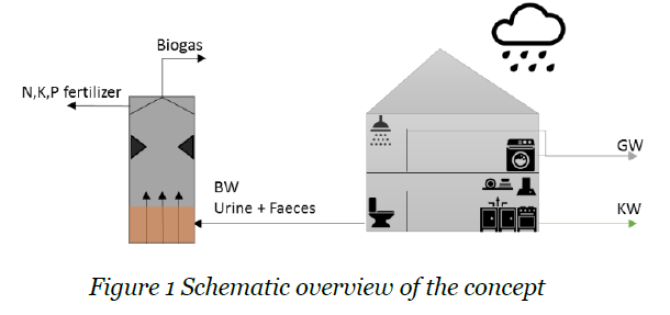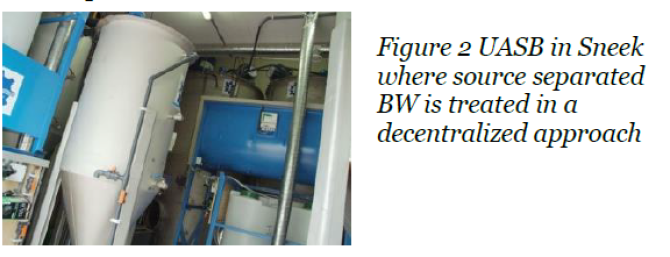
Project
Nutrient and energy recovery from black water through (hyper-)thermophilic anaerobic digestion
Global demands for fertilizer production are increasing due to exponential population growth. Domestic wastewater is a nutrient-rich source, but in conventional treatment processes nutrients from this source are recovered to a low extend or not even at all (<50% phosphorus and <5% nitrate). In Run4Life1, an EU-funded project, a decentralised approach for segregating different domestic wastewater streams is applied for efficient nutrient recovery. In segregated waste water collection, black water (BW), containing the urine and faeces fraction, is collected separate from rain- and bathroom water (grey water) and kitchen waste (KW). This segregated collection of wastewater has the advantage of obtaining BW with high concentrations of nutrients and organic matter, and thus energy. On the other hand, also the main pathogen fraction is present in BW, along with micro-pollutants. The aim of the research is to design a single step anaerobic digestion process for the recovery of safe (pathogen free) fertilizers along with energy production through biogas.

Process description
In order to remove pathogens, the process will be performed at 70 °C (hyper-thermophilic) in an upflow anaerobic sludge blanket reactor (UASB). At this temperature most pathogens are thought to be inactivated and methane production is still possible. However, the hyper-thermophilic anaerobic digestion process has not been applied on concentrated BW before. The first goal is to select the inoculum which is best capable of adapting to the hyper-thermophilic conditions. Then the optimal reactor conditions, kinetic parameters and efficient nutrient recovery methods will be determined and finally the process will be applied on a treatment facility for decentralised segregated wastewater in Sneek. Methods for the recovery of nitrogen and phosphate at 70 °C also need to be developed.

Research challenges
- Assess the possibility of hyper-thermophilic treatment of BW and select inoculum
- Determination of reactor conditions for a stable process (pH, HRT, SRT, etc.)
- Obtain hygienic fertilizer by sufficient pathogen removal
- Recover nutrients and energy from black water at high temperatures